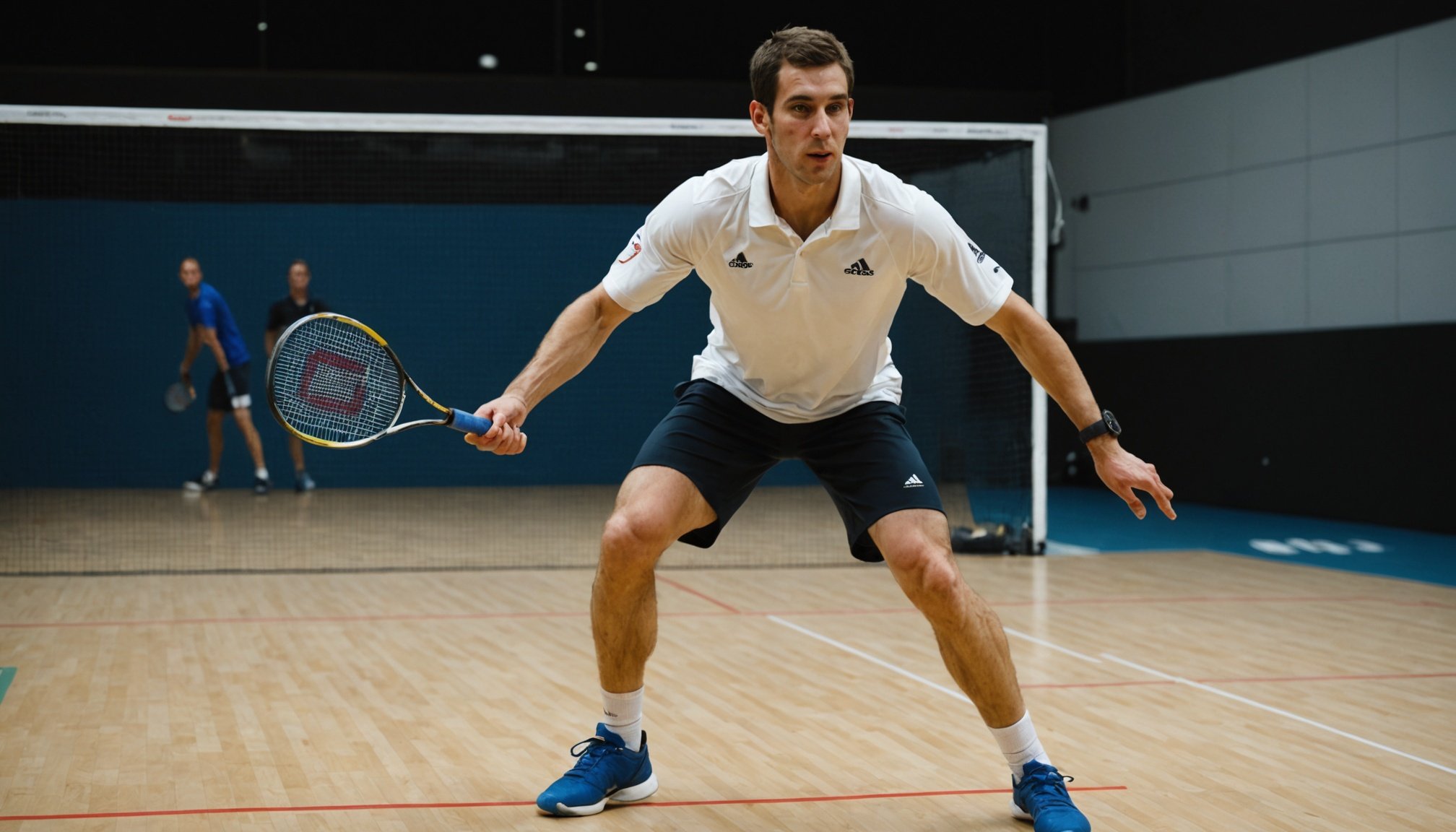Understanding Peripheral Vision in Sports
Peripheral vision is the ability to see objects outside of direct line of sight, allowing athletes to perceive their environment more fully. Critical for sports performance, it provides a heightened level of visual awareness necessary for reacting effectively during play. While central vision focuses on details directly ahead, peripheral vision covers the wider field, alerting athletes to movements and objects on the sidelines.
Research indicates that peripheral vision plays a pivotal role in improving reaction times and spatial awareness. For instance, in soccer, players use peripheral vision to track teammates’ positions without looking away from the ball. This broad visual scope allows athletes to make quick decisions and adapt swiftly to game dynamics.
Also to read : Unlocking Endurance: Proven Techniques for Rowers to Conquer Long-Distance Races
Studies have shown that athletes with enhanced peripheral vision often excel in their respective sports. A 2022 research article found that basketball players with training in peripheral awareness had faster reaction times during game-play. This demonstrates that honing peripheral vision can lead to significant performance gains, emphasising its importance in various athletic disciplines.
In summary, peripheral vision is essential for athletes aiming to boost their performance by anticipating movements and enhancing their visual awareness on the field, making it a critical component of sports strategy.
Also read : Hike seeker: your guide to top trails and gear tips
The Science Behind Peripheral Vision and Squash
In fast-paced sports such as squash, peripheral vision plays a crucial role in enhancing squash performance. This type of vision allows players to detect motion and changes in their surroundings without directly looking at them, which is essential due to the quick movements and rapid pace of the game. Squash requires players to react swiftly to the ball and opponents’ motions, demanding efficient visual processing.
Visual processing involves the brain’s ability to interpret and respond to visual stimuli. During gameplay, the brain must effectively handle peripheral information to aid decision-making. This capability significantly impacts a player’s reaction time, as players must rapidly assess their environment and decide their next move. Enhanced peripheral vision allows for quicker responses, giving players an edge in competitive matches.
Numerous studies and expert opinions underscore the importance of peripheral vision in squash. Research indicates that players with better peripheral awareness tend to make quicker, more accurate decisions during gameplay. This advantage stems from the brain’s ability to process and prioritize peripheral cues, enabling players to anticipate opponents’ actions and react accordingly. In short, superior peripheral vision is fundamental to excelling in squash.
Techniques to Enhance Peripheral Vision
Improving peripheral vision is crucial for squash players, allowing them to react swiftly and anticipate their opponents’ moves. Various visual training methods, such as eye exercises and squash drills, can significantly enhance this skill.
Specific Eye Exercises
Targeted eye exercises are vital for improving peripheral awareness. A simple method involves focussing on one point while attempting to notice objects or movements at the edges of your visual field. These exercises should be incorporated into your daily routine, starting with a few minutes each day and gradually increasing the duration. Tracking progress is essential; consider keeping a journal to note improvements and challenges. This will help you to stay motivated and adjust your exercises as needed.
Training Drills for Squash Players
Training drills specifically designed for squash can sharpen peripheral vision. One effective drill is to practice shadow swings, emphasizing awareness of court positioning and surroundings. Integrating these drills into regular training sessions fosters heightened reflexes and strategic gameplay. Athletes, who consistently employ such techniques, often report improved peripheral vision, aiding them significantly during matches.
Use of Technology and Visual Aids
Incorporating technology can further refine peripheral vision skills. Various apps and devices provide visual aids for tracking improvement and facilitating video analysis to understand visual dynamics better. Such tools deliver immediate feedback, helping players fine-tune their skills reactively. Leveraging this technology empowers athletes, making training more effective and insightful.
Integrating Peripheral Vision Training into Practice
Incorporating peripheral vision training into your training regimen can significantly enhance your squash performance. Regular practice is crucial for developing these skills, enabling you to better anticipate the game and react swiftly to your opponent’s moves. A well-structured training regimen that includes peripheral vision exercises is essential.
To balance peripheral vision training with standard squash practices, consider a schedule that alternates between skill drills and game simulations. Integrating these exercises during warm-ups can seamlessly complement your existing practice strategies. For instance, using vision drills such as focusing on various moving objects outside of your central field of view can improve your situational awareness on the court.
Athletes have shared real-world experiences highlighting substantial performance improvement through focused training. By fostering enhanced peripheral awareness, players reported quicker reaction times and a refined ability to foresee probable opponent strategies. Implementing personalized schedules that adapt techniques based on individual needs can further enhance effectiveness.
To maximize benefits, ensure that peripheral vision exercises are tailored to align with specific performance goals. Consistent practice, combined with a strategically crafted training regimen, is your pathway to performance improvement in squash. Engage actively in this process, and you’ll likely experience a noticeable enhancement in your game.
Case Studies and Success Stories
In the world of professional squash, athlete testimonials reveal how peripheral vision training has become a vital tool. Many squash players highlight significant improvements in their game after embracing such training. These professionals often note that enhanced peripheral vision allows them to better anticipate opponents’ moves and react more swiftly on the court.
Performance outcomes from both adult and youth squash programs have shown promising results. Quantitatively, players experience faster reaction times and improved accuracy when striking the ball. These measurable improvements translate into more wins and higher efficiency during match play. On a qualitative level, athletes report increased confidence and reduced in-game stress, contributing to overall enhanced performance.
Coaches offer valuable insights into seamlessly integrating peripheral vision training into athlete development. It’s important, they say, to gradually incorporate exercises that focus on widening focus whilst playing. Starting with simple drills, like tracking multiple moving objects during practice, can build a player’s ability to maintain situational awareness. Progressively increasing the complexity of these routines ensures that this skill becomes second nature, thereby solidifying its benefits. Players and coaches alike underscore the importance of consistency and patience in achieving optimal outcomes.











